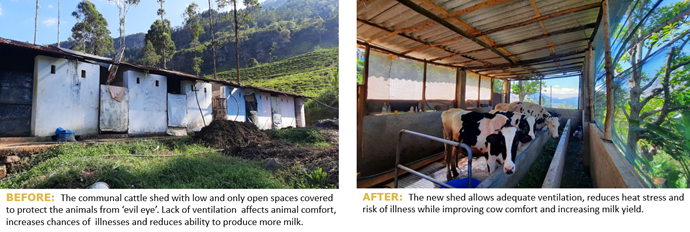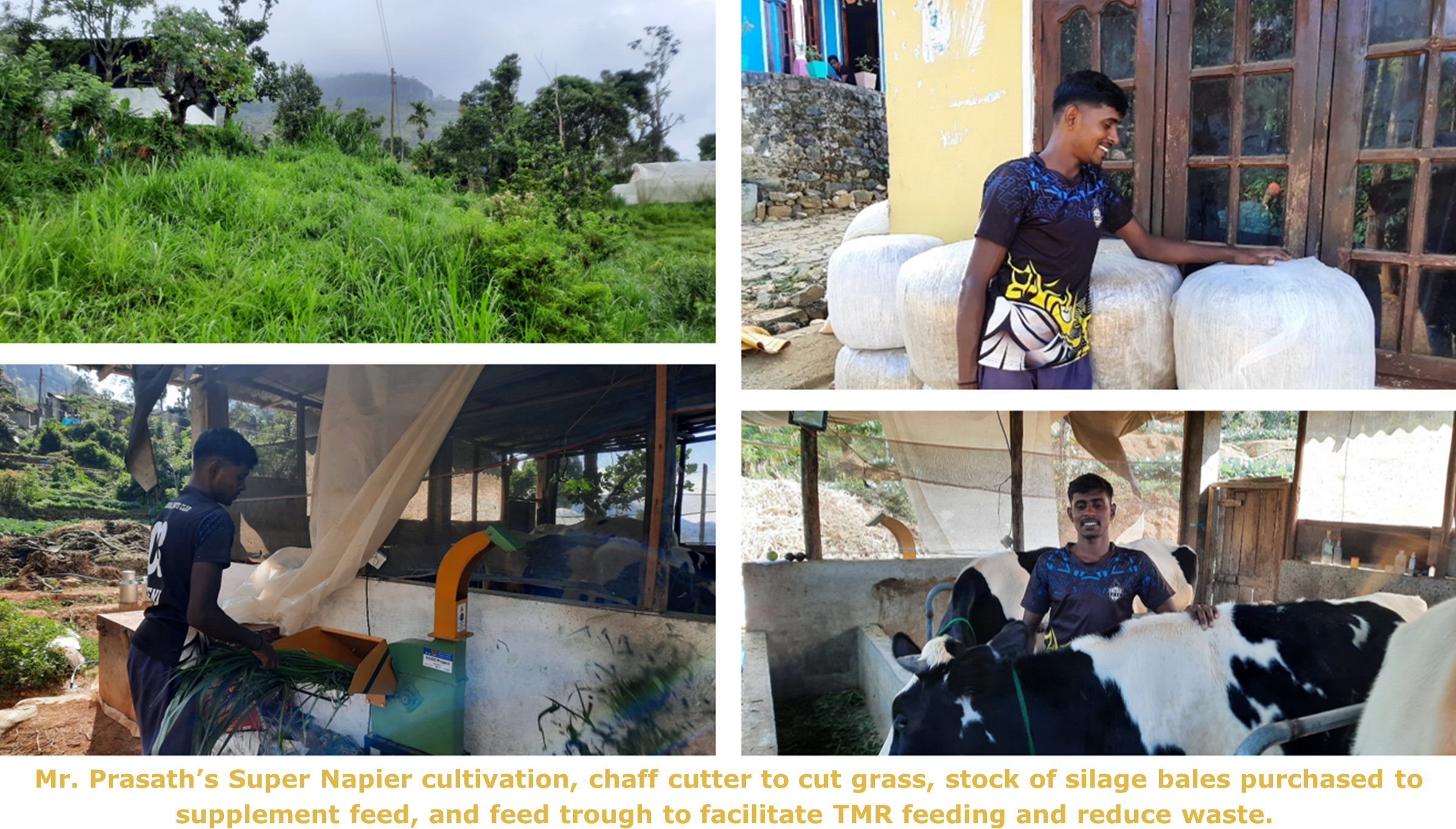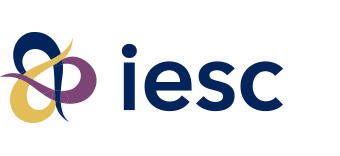Young Farmer Breaks with Tradition to Double Milk Production
Empowering Sri Lankan farmers with practical knowledge and best practices in modern dairy farming
Sri Lanka’s ‘hill country,’ the mountainous region in the center of the island, offers the best climatic conditions for dairy farming. But the advantages end there. Small- and medium-scale dairy farmers in the region have access to very little land, and the hilly terrain limits space for proper cattle sheds and fodder cultivation. Many small- to medium-scale dairy farmers in the area live on tea plantations and raise their cattle in community sheds. Mr. Subramaniam Prasath from Ramboda in the Central Province was one such farmer, producing a very modest 22 liters of milk per day on average. Mr. Prasath raised his dairy cows in a confined common housing shed shared with ten of his fellow dairy farmers. These farmers were unaware that these conditions were far from ideal for raising productive dairy cows.
In January 2020, Mr. Prasath attended a training session conducted by IESC’s United States Department of Agriculture (USDA)-funded Market-Oriented Dairy (MOD) project. During this training, he realized that the traditional approaches to dairy farming that had been handed down to him were contrary to the accepted best practices of modern dairy farming. This knowledge encouraged him to change his methods. “He was determined to overcome the challenges and adopt the best practices to improve farm productivity. He took full advantage of MOD’s post-training mentoring and monitoring visits, including calls to seek clarification,” said Mr. Satheeskanth, MOD’s field officer in the region.
The primary challenge he faced in his journey to increase milk production was the confined space of his existing cattle shed, which lacked adequate ventilation, impacting cow comfort and milk production. With the limited space available, Mr. Prasath rebuilt his cattle shed incorporating features recommended by IESC to increase ventilation and improve access to feed and water.

The second challenge was inadequate feed and water. To address the need for water 24/7, Mr. Prasath started by gathering clean water in buckets throughout the day. Recently, with the support of strategic investments provided by MOD, he installed five auto-drinkers which provide constant access to water and allow the animals to drink water as needed. He also started cultivating Super Napier grass using cuttings provided by MOD in a half-acre plot. With IESC’s guidance he started using his chaff cutter to chop grass to the ideal size and feed his cows using the Total Mixed Ration (TMR) method promoted by IESC’s MOD team. To supplement his own grass cultivation, he began purchasing 2,000kg of silage every other month from a silage entrepreneur developed and introduced to him by IESC.
“I am glad I changed my ways; just these measures alone increased the yields by 3-4 liters per day per milking animal. Today, I get about 55 liters a day on average,” said Mr. Prasath. “In addition, the cut-and-feed method reduced wastage of grasses by nearly 30 percent, saving me money and the time and effort I spend to gather the grasses,” he added. Mr. Prasath’s next target is to reach 80 liters per day by December 2022.

Seeing Mr. Prasath’s success, two other dairy farmers from the communal shed have also started preparing separate sheds and following best practices. Speaking on this developing trend, Mr. Satheeskanth explained, “Normally MOD does not promote investment in improving the sheds until other best practices have been addressed, but in the upcountry areas, the traditional method of raising animals in a poorly ventilated, cramped space is quite a hindrance to animal comfort and increasing milk yields. Under these circumstances, we encourage making these changes early and the farmers see the results instantly.”

To date, IESC has trained 6,108 Sri Lankan dairy farmers in dairy management best practices. An independent survey revealed that 55 percent of IESC-trained farmers provide clean drinking water throughout the day, 49 percent grow their own fodder, 19 percent make their own silage while 9 percent purchase silage, and 33 percent use the TMR feeding method. The overall results revealed that 60 percent of the dairy farmers surveyed provide better and more nutritious feed to animals throughout the year because of IESC’s support.
The Market-Oriented Dairy (MOD) Project, based in Sri Lanka, is funded by the United States Department of Agriculture (USDA) ‘Food for Progress’ initiative and implemented by IESC. The project aims to double the milk production of participating dairy farmers and enable them to obtain a higher price premium for fresh milk through interventions primarily designed to enhance their technical knowledge and create an entrepreneurial, business-oriented mindset. The project also supports enterprises along the dairy value chain to meet the demands of the country’s dairy sector to catalyze a sustainable growth. The project’s sub-partners are Sarvodaya, University of Florida, and Global Dairy Platform.


